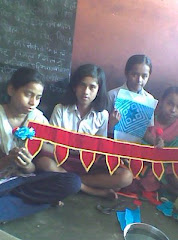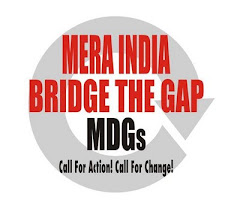http://www.boloji.com/wfs6/2008/wfs1122.htm
Mindset Behind a Bad Ad
by Shree Venkatram
Words are very powerful. They can maim and devastate, or they can enthuse and liberate. Just two words were the undoing in a TV commercial of financial company, ING Vysya Life Insurance, that recently drew flak from the Education Secretary to the Delhi government and left many women fuming.The ad for financial planning was taken off TV screens soon after protests. Those in the business of communicating with the masses need to be very conscious of the words they use.The ad was slick and technically sound. It had color and strong imagery, but socially it was all wrong. It fed into biases and promoted stereotypes, and at the root of it all were two Hindi words - 'bhaari' and 'bojh', which literally translate into 'heavy' and 'burden'. The words are synonymous with the female and the raising of the girl child in India, used to denote the great burden she is for the family, especially for the men - her father, her husband, never mind the fact that the reality is otherwise... but that is another story.For those who missed the commercial - the word 'bojh' was used just once towards the end, in the punch line that came as a nurse hands over a new born baby girl to the father... and the ground caves in under his feet, with 'kahin khushiyan bojh na ban jaiyein' (happiness should not become a burden).
The ad had a series of scenes showing men bearing the 'burden' of women. The first was a shot of a bridegroom at his wedding. He looks at his bride and the next frame shows him waving to a friend, and as the ground caves in, the words ring out, 'Dekhne mein toh pyaari hain, khushiyan thodi bhaari hain' (She is lovable, but the happiness is a little heavy).
The next scene shows a daughter rushing out to meet her father to give him a good news - she hands him a letter, which states she has been selected for the MBA course in a foreign university and the fee is Rs.15,00,000 (US$ 1= Rs 40).The line, 'dekhne mein to pyaari hai, khushiyan thodi bhaari hain', rings out again and the ground sinks beneath the father."Why wasn't a son shown? It is not like a son can study for free," the education secretary had asked. Someone who claimed to know the people who made the ad commented on a blog: "Funny enough, in the past another life insurance company showed the 'cost' for a daughter getting married and a son doing his MBA. Then the comments were 'why is there a boy shown? Like only boys study and girls just get married'."
But think. Would the word 'bojh', or for that matter 'bhaari', ever be used for a son? Never! Most Indian parents do their very best, even scrimp and scrounge, to give their son the best education they can afford. But it would be blasphemous to term him a 'burden'.When an ad goes retrograde on national networks, it is cause for serious concern. A medium that reaches out to the masses has to necessarily be both responsible and cautious. Words that condemn or derogate sections of the population must be avoided. For stereotypes harm, they limit and stunt human potential. Just ask the thousands of Indian women who have to overcome such stereotypes every day of their lives. The medium that reaches the masses has to liberate, help us out of the ghettos of our mind into a world where the human spirit and potential knows no shackles. Just imagine: What a powerful ad it would have been had the woman been shown buying a house for her parents, or her parents saving happily for the MBA course minus the 'bhaari' or 'bojh' factors.
Not so long ago, an ad taken off the networks argued that by using a fairness cream a girl could get the job of an airhostess and her parents, who have been bemoaning the fact that they do not have a son, are now proud of her achievement. In this case, the All India Democratic Women's Association had written to the multinational company in protest, but when it did not respond, appealed to the Human Rights Commission, which passed the complaint to the Ministry of Information and Broadcasting. The government went on to issue a notice against it.The multinational in a PR damage control exercise then launched a scholarship scheme for Indian women who are economically disadvantaged. The ban did not help much. It could hardly influence popular mindsets, given the obsession Indians have with fair skin. The next few years saw a plethora of men's fairness creams being launched. It was easier to extend the stereotype than to fight it. The great King Khan himself appeared in a commercial advising a young man to switch to a man's whitening cream and not use his sister's! What a potent pitch. The market for men's bleaching creams is on the upswing, one learns.And now we hear that a certain dusky actress has been replaced with a fair-skinned one for a jewellery commercial. An apt commentary on the times.For once, let us take a lesson from the much-maligned cola companies, which had agreed not to use children in their commercials and have stuck to their decision. Let the media, especially ad and film-makers, be more discerning of the words they use. Regulation should come from within.
March 30, 2008
Thursday, 29 January 2009
Subscribe to:
Post Comments (Atom)
.jpg)





+(2).jpg)


1 comment:
loved your line of arguments.
MK
Post a Comment